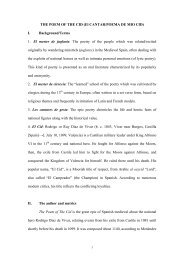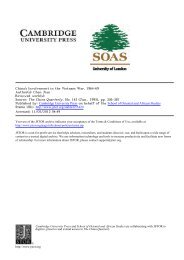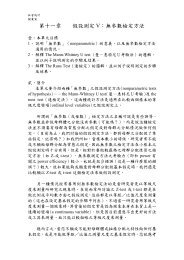Assembly Maintainability Study with Motion Planning
Assembly Maintainability Study with Motion Planning
Assembly Maintainability Study with Motion Planning
Create successful ePaper yourself
Turn your PDF publications into a flip-book with our unique Google optimized e-Paper software.
In Proceedings of 1995 IEEE Int’l Conf. on Robotics and Automation(b)initial configurationÄÄÄÄÄÄÄÄÄÄÄÄÄÄÄÄÄÄÄÄÄobstaclepath (a)final configurationFigure 2. Typical potential guided planner will find (a) before(b), because (a) is shorter.Secondly, sometimes there are preferred neighborhoodsthrough which an access path should be found. This is particularlytrue <strong>with</strong> maintainability studies, where access is oftenlimited by realistic concerns of an assembly such as the sizeof a moving object, support regions for tools, heat sources toavoid, or simply access convenience. For instance, Figure 2illustrates a case where, using potential field guided plannerssuch as RPP, path (a) would be found because it is a shorterpath and the moving object has more room to maneuver.Instead, path (b) as shown may be preferred from maintainabilitypoint of view because of access support and ease ofreach. An obvious solution to input such bias is to place additionalobstacles in the free space to judiciously block certainpassages. But such solution requires the user to anticipate undesirablepaths before hand. For complicated 3D assemblies,it may be hard to complete such anticipation.The third aspect is the complexity of objects and the relatedcost in detecting collision. To effect compliant motion (wherethe moving object is in contact <strong>with</strong> the obstacles as it moves),exact collision check is required. In robotics, such polygonal–based collision detection can often be avoided by using simplifiedmodels. In design automation, a sophisticated partusually replaces a subassembly of smaller parts in the old design.One consequence of such increased complexity in shapeis that more polygons are needed to describe its shape, resultingin more time consuming polygonal collision checks.Another difference lies in the accuracy of collision detection.In ordinary robotic applications, it is acceptable to useapproximate (and conservative) collision detection becauseof control uncertainty and safety concerns. In maintainabilitystudy, the need to confine to tolerances and accuracy in themodels capturing the environment demands accurate collisiondetection.3 An Automated <strong>Maintainability</strong> <strong>Study</strong> SystemBy incorporating solutions to the above concern, we developedan automated maintainability system. Its planner isbased on the RPP. For collision detection, we implementedthe algorithm reported in [Quinlan94] to reduce the numberof calls to an exact collision checking routine that models after[Gilbert85]. We review relevant details of the RPP first (Detailscan be found in [Barraquand90]). Then, we elaborate onour extension to the planner to handle some of the requirementsdescribed in the previous section.The RPP uses heuristic potential fields as a guide to search fora path and uses Brownian motions (random walks) to escapelocal minima of the potential fields. The heuristic potentialfields are goal oriented fields created in the workspace forpoints selected from the robot. Each of these potential fieldshas unique global minimum at the goal configuration of therobot. A potential function P is defined over these potentialfields such that P(q) = 0 iff q = q t , where q is any configuration,and q t is the goal configuration. Let C(q) be a collision checkingfunction that returns ok when q is collision–free. The robotfollows the gradient of P from q to its neighbor configurationq’ if and only if P(q’) < P(q), C(q’) = ok, and q q t . Thedistance between q and q’ is the search resolution. When thesearch reaches a local minimum in terms of function P, a presetnumber of random walks, each of which is followed by agradient motion, are performed to escape the local minimum.When all these attempts fail, a backtrack step is performed toretract part of the path found so far.3.1 Dynamic, Adaptive Refinement of Search ResolutionA heuristic approach was developed to change the search resolutionadaptively depending on how cluttered the environmentis. Although we do not explicitly compute the C–spaceand do not know how the C–obstacle surfaces are shaped anddistributed, we use the number of collisions encountered atconfiguration q as an indicator to how tight the C–obstaclesurfaces are in the vicinity of q. Specifically, assuming x isthe number of collisions encountered so far at configurationq. The heuristic model used for this adaptive multi–resolutionsearch is given bys i+1 = s i * fwhere s i+1 is the current step size, s i is the successful resolutionused in the last move, and . xf = f max – 0 < x < x sx sf min +12 x m – xx m – x sx s < x
















